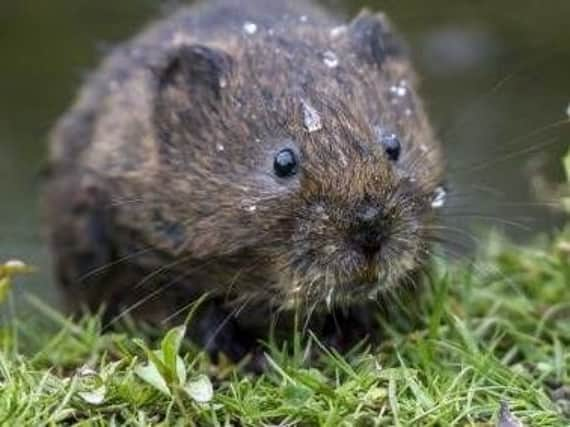Pioneering project to rescue '˜Ratty'


Population numbers for the creatures are said to have plummeted in the UK over the past 10 years, with the drop estimated at around 30 per cent in places.
But conservation work by Lancashire, Greater Manchester and North Merseyside Wildlife Trust, at the likes of Wigan Flashes, Highfield Moss near Lowton, and Astley Moss, is now having a significant impact.
Advertisement
Hide AdAdvertisement
Hide AdWildlife trust workers have been rewarded with increased sightings of the water mammals, made famous as the character Ratty in Kenneth Grahame’s The Wind in the Willows.
Mark Champion, projects manager for the Wigan area at the trust, said: “We have completed some work for water voles concentrating on ditches and at Wigan Flashes.
“Our recent successful re-wetting work has also created some great water vole habitat at Highfield Moss. Our mossland work across the region is aimed at providing excellent habitats for many creatures, including the water vole.”
The water vole decline has been attributed to a variety of factors, according to the trust, including habitat loss, water pollution and the threat of built developments. Around 94 per cent of locations where they once known to have thrived are today reporting substantial dips in sightings.
Advertisement
Hide AdAdvertisement
Hide AdWater voles have also fallen victim to a more voracious rival, North American minks, who were introduced into the UK for fur farming in the 20th century but slowly made their way into nature.
Trust senior policy manager Ellie Brodie said: “Water voles are an essential part of our wild and watery places and it’s terribly sad that we’re continuing to witness huge declines of this much-loved mammal.”
Katie Chambers, a trainee on the trust’s Carbon Landscape project, has been carrying out surveys at Highfield Moss, just to the south of Lane Head near Lowton.
She said: “We inspected every burrow we found to see if it was the correct size, looking as well for signs of any feeding activity as well as latrines. We did come across two burrows that looked to be potentially water vole-sized but no signs of water voles yet.”